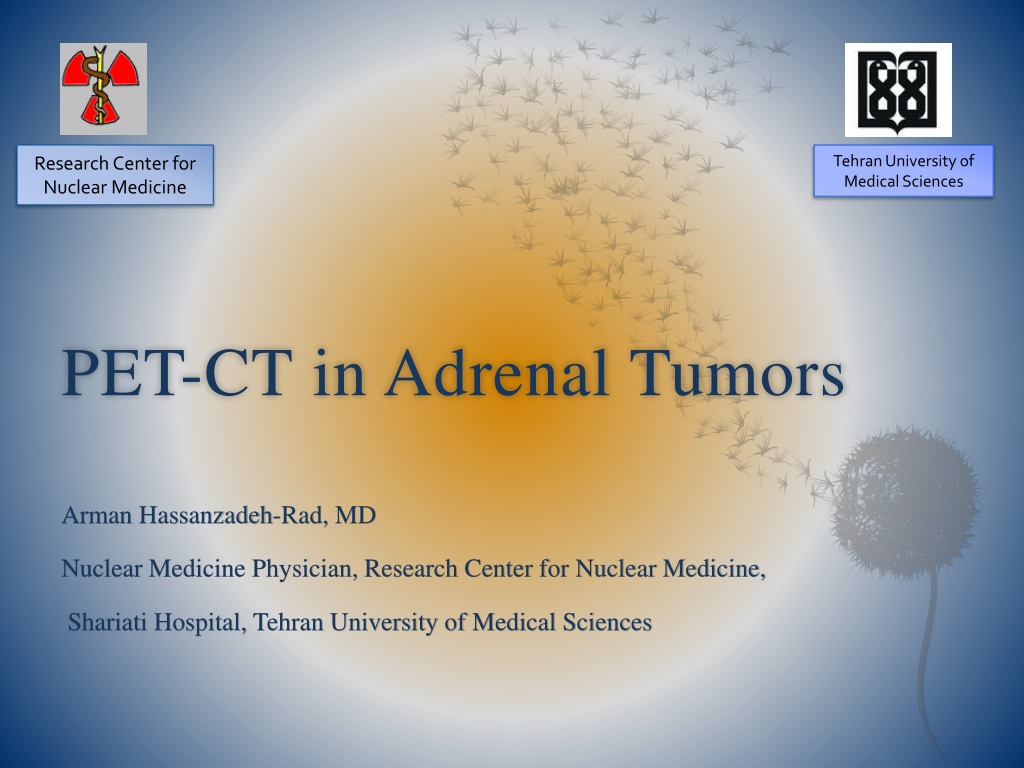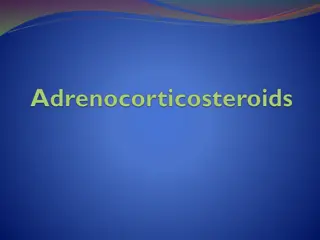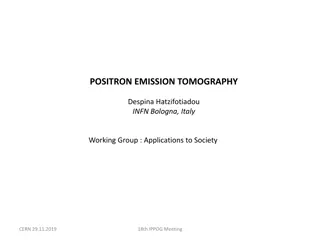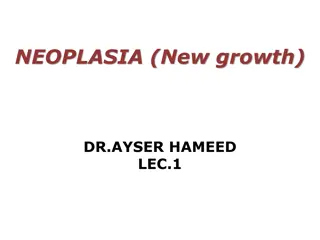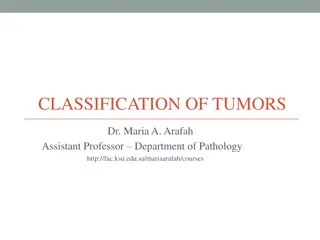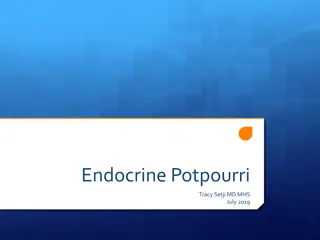Understanding PET-CT Imaging in Adrenal Tumors at Tehran University
Tehran University of Medical Sciences' Research Center for Nuclear Medicine specializes in PET-CT imaging for adrenal tumors. Dr. Arman Hassanzadeh-Rad, MD, explains the principles of PET imaging, hybrid imaging combining PET and CT, F-18 FDG use, SUV measurement, and more. PET-CT allows for both attenuation correction and anatomical localization, providing valuable diagnostic insights in oncology. Standardized Uptake Value (SUV) is a key parameter for assessing metabolic activity in tissues.
Download Presentation

Please find below an Image/Link to download the presentation.
The content on the website is provided AS IS for your information and personal use only. It may not be sold, licensed, or shared on other websites without obtaining consent from the author. Download presentation by click this link. If you encounter any issues during the download, it is possible that the publisher has removed the file from their server.
E N D
Presentation Transcript
Tehran University of Medical Sciences Research Center for Nuclear Medicine PET-CT in Adrenal Tumors Arman Hassanzadeh-Rad, MD Nuclear Medicine Physician, Research Center for Nuclear Medicine, Shariati Hospital, Tehran University of Medical Sciences
Hybrid Imaging: PET-CT In hybrid PET-CT imaging ,CT is used for two different purposes: 1- Attenuation Correction: Each 511 KeV photon passes through tissues with variable tissue densities (from bone , to soft tissues and lung). This interaction of photon with material (through Compton scattering and photoelectric processes) decreases photon intensity. CT gives attenuation coefficients of different tissues (and an attenuation map) and corrects the amount of intensity which has been decreased because of the attenuation (initial photon intensity is more than non-attenuation corrected photon intensity)
Hybrid Imaging: PET-CT 2-CT is used for anatomical localization: although CT applied in PET-CT is non-diagnostic low-dose CT( tube current= 30 mA),it still can be used to roughly find out anatomical locations in neck, chest, abdomen, pelvis and extremities. However; the interpreter should examine Registration of PET images with CT images.(i.e bladder activity should be precisely matched with anatomical location of bladder). In most instances, PET and CT images are automatically fused. If not, one should manually shift organ s activity (in this case bladder) to match anatomical location of that organ. Usually by precise fusion of one organ s PET and CT images, other regions will be matched simultaneously.
Standardized Uptake Value (SUV) SUV is a semi-quantitative parameter to measure amount of uptake in a region. SUV is defined as:[mCi/ml(decay corrected) in tissue] /mCi injected/body weight in grams If tissue density is assumed 1 gr/ml, SUV will be dimensionless.
SUV Severel methods to express SUV: SUV max: pixel with maximum SUV throughout the whole Region of Interest (ROI) - SUV mean: average of SUV in the hottest 4 * 4 pixels - SUV adjusted to lean body mass (SUL) - SUV adjusted to body surface area (SUVbsa) -
SUV Most researches have been performed and data are collected according to SUV max (adjusted by total body weight). SUV max is the easiest and most repeatable method for SUV measurement. There is no single SUV max cut-off to distinguish benign from malignant lesions. Benign inflammatory and infectious lesions (TB osteomyelitis, brucellosis, inflammatory inguinal lymph nodes,etc) may have SUV max up to20! Malignant lesions with muscinous compartment or slow- proliferating malignant lesions like bronchoalveolar carcinoma, renal cell carcinoma,etc) may have SUV max less than 2.5
Adrenocortical Tumors (Benign or Malignant?) These tumors are categorized based on their sizes, densities (Hounsfield Units), absolute intensity of FDG uptake (visually and by SUVmax calculation) and relative intensity of FDG uptake as compared to the liver (internal reference); Grade 0- No FDG uptake Grade 1-Mild FDG uptake (Uptake less than that of the liver) Grade 2-Moderate FDG uptake (Uptake equal to the liver) Grade 3: Severe FDG uptake (Uptake greater than that of the liver) Tumor SUVmax/ Liver SUVmax > 1.5 is highly indicative of a malignant lesion.
Adrenocortical Tumors (Benign or Malignant?) Results of Palatino et.al study: There was no significant difference in Tmx:Lmx between the SA and NSA (median of 1.26 for NSA and 1.23 for SA , p=0.948, Mann-Whitney U test On subgroup analysis, the median ratio of benign non-secreting tumors (BNSA) was 1.2 with no difference when compared with benign secreting tumors (BSA): median ratio 1.17 (p=0.901). The median ratio was 2.7 for both malignant subgroups (p=0.945): 4 malignant NSA (MNSA) and of 10 malignant SA (MSA) (range 5.4 - 1.65).
Adrenocortical Tumors (Benign or Malignant?) Results of Palatino et.al study: The correlation between Tmx in benign vs malignant tumors (median of 3.06 vs 7.75) and Tmx:Lmx of this group (1.17 vs 2.7) were strongly significant (p<0.001). There was a significant positive correlation between Tmx:Lmx and Weiss score (correlation coefficient: 0.6; p<0.001). There were no significant correlations between Tmx:Lmx and tumor diameter and free urinary cortisol/24h as well as no significant difference between Tmx of SA and NSA (median 3.3 for SA and 3.98 for NSA; p 0.514, Mann- Whitney test).
Metastatic Adrenal Lesions SUVmax greater than 3.1 in FDG PET/ CT scan=> sensitivity, specificity, PPV and NPV all above 90 % for detecting metastatic adrenal lesions. On the other hand, SUVmax below 3.1 with any HU leads to sensitivity, specificity, PPV and NPV all above 95 % for detecting benign adenoma (either lipid-rich or lipid-poor).
Metastatic lesions in the Adrenal gland: Bronchongenic cancer with metastases to the medial limb of the left adrenal gland (SUVmax=16.8, MTD=6mm, HU=+36) and left kidney
Hypermetabolic metastatic lesions in bilateral adrenal glands in a patient with NSCLC
